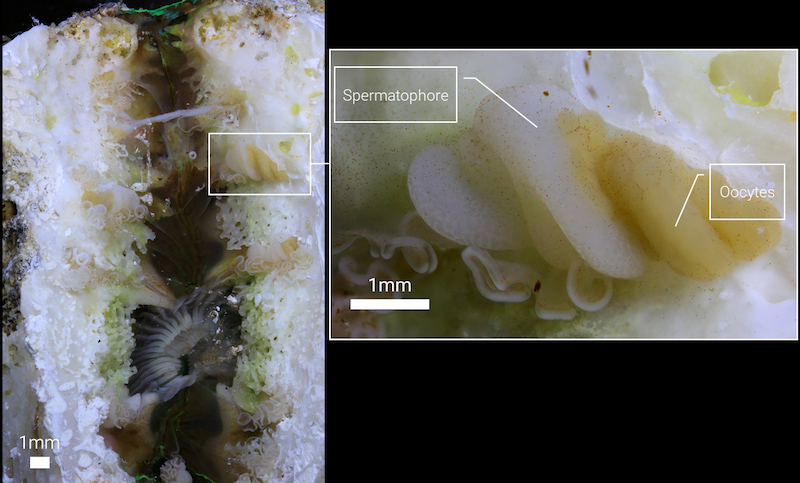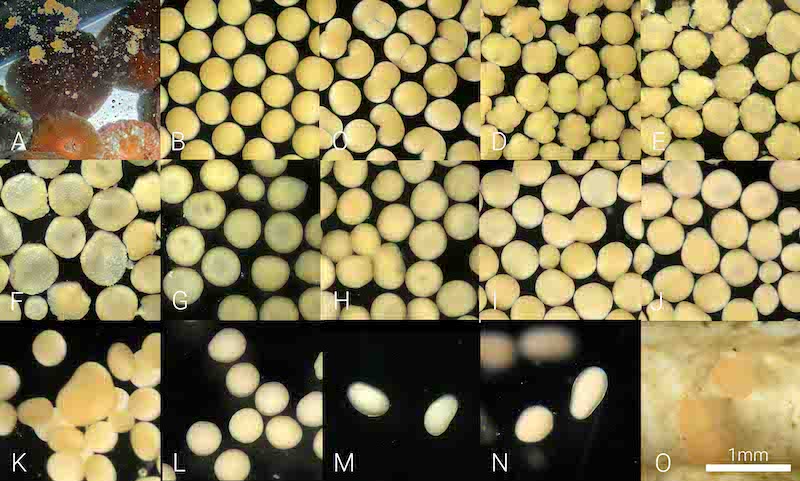在过去的十年中Homophyllia australisis a species that remained elusive to me despite four years of effort and commitment. The challenge of working with this species is that no information is available in the scientific literature about how, or when, it reproduces and so a systematic approach (and a good wedge of personal funds!) has been needed to unlock this iconic species’ secrets.
在与分支物种合作时Acropora, frags are taken periodically to observe the developing oocytes (eggs) and sperm within the coral. This gives a lot of information, such as if it’s a brooder or broadcast spawning species and, if it’s a broadcast spawner, based on the size and colour of the oocyte we can tell when the colony is likely to spawn in relation to the water temperature and lunar cycles.

Homophyllia australisbeing a single polyp means fragging will likely killing it but, despite the risk, it’s the best approach that can be used to work out its reproduction. So I’ve been ordering in new polyps, only to cut them in half when they arrive in an attempt to gain further information about its life cycle – a painful and costly act all in the name of science!
Using this approach, I’ve seen thatHomophyllia australis(unlike its Brazilian cousinScolymia wellsithat broods) is a hermaphroditic broadcast spawning species, meaning it contains both male and female gonads and releases eggs and sperm into the water during a spawn event.
This year I’ve had multiple individuals releasing gametes together in my home coral spawning system which has been a crowning moment for all the years of hard work. My system at home is a modification of our coral spawning systems we produce for世界各地的研究小组和is programmed to replicate the southern reefs of the Great Barrier Reef where this species is most common.

Fertilisation rates from this spawn have been good, resulting in high numbers of developing embryos from this first aquarium spawning of the species. Embryological development period is similar to other LPS species that I’ve worked with,Micromussa lordhowensis和blblymussawellsi,形成从浮浪幼体day three when at this point they drop out of the water column in search of a suitable substrate to settle on.
In addition, settlement has also been good with plenty of polyps forming, and while it’s still early days with lots more data to collect on growth and survival rates, it’s a great start in moving this species a step closer to aquarium-based aquaculture. I’ll hopefully have an update in six months with some more positive developments.

Dr Jamie Craggs is the co-founder of the珊瑚产卵实验室,Horniman博物馆和花园的水族馆策展人,以及伦敦自然历史博物馆的科学助理。他专门研究在水族馆中引起珊瑚产卵事件,并开发新的方法来培养幼年珊瑚的现场。


